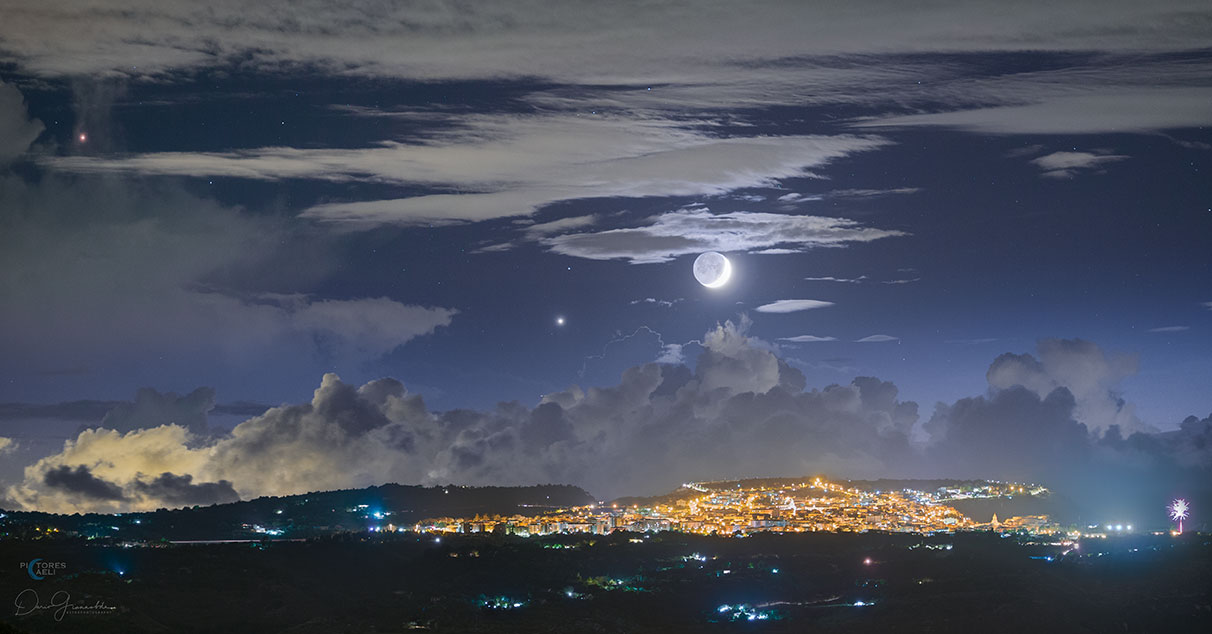2021年10月18日
Earthshine Moon over Sicily
Image Credit & Copyright: Dario Giannobile
Explanation: Why can we see the entire face of this Moon? When the Moon is in a crescent phase, only part of it appears directly illuminated by the Sun. The answer is earthshine, also known as earthlight and the da Vinci glow. The reason is that the rest of the Earth-facing Moon is slightly illuminated by sunlight first reflected from the Earth. Since the Earth appears near full phase from the Moon — when the Moon appears as a slight crescent from the Earth — earthshine is then near its brightest. Featured here in combined, consecutively-taken, HDR images taken earlier this month, a rising earthshine Moon was captured passing slowly near the planet Venus, the brightest spot near the image center. Just above Venus is the star Dschubba (catalogued as Delta Scorpii), while the red star on the far left is Antares. The celestial show is visible through scenic cloud decks. In the foreground are the lights from Palazzolo Acreide, a city with ancient historical roots in Sicily, Italy.
Tomorrow’s picture: colorful star cluster
西西里上空的地照光眉月
影像提供与版权: Dario Giannobile
说明: 照说月亮在蛾眉相之时,我们应只能见到受到太阳光直射的部分月面。那为何我们能见到整个月面?此提问的答案是:由于有地照光(或称达文西灰光);其他面向地球的月面,受到从地球反射的阳光之照耀。由于在蛾眉月相期间,从月球看过来,此时接近满相的地球,所产生的地照光也几乎最明亮。在这幅由在此月稍早连续拍摄的多幅高动态范围照片组成之主题影像里,这轮受地照光耀的东升月亮,缓缓通过影像中心以亮斑之姿现身的金星附近。金星上方则有房宿三(Dschubba, Delta Scorpii),而影像上左缘的泛红亮星为心宿二。此外,在这幅透过美丽云层拍摄的影像里,前景有来自意大利西西里帕拉佐洛阿克雷德古城的都市灯火。
明日的图片: colorful star cluster







